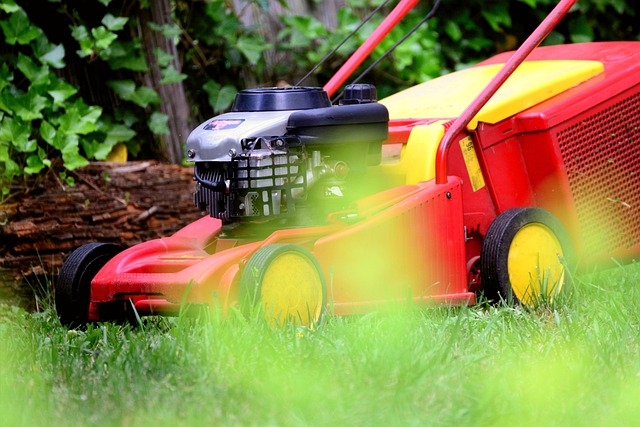Mulching and edging are essential lawn care practices that transform your landscape. Mulch adds organic material for moisture retention, weed suppression, and soil enrichment, while precise edging defines yard boundaries, creates a polished look, and prevents grass from competing with surrounding plants. Integrating these techniques enhances curb appeal, conserves water, and promotes a vibrant, healthy outdoor space.
Transform your lawn into a picture of perfection with effective mulching and edging techniques. This comprehensive guide explores the art and science of lawn care and landscaping, delving into the benefits and best practices of mulching, including its role in soil health and weed suppression. We’ll also navigate the intricacies of precise edging, enhancing your lawn’s aesthetics. Discover how integrating these two strategies can lead to a lush, well-defined outdoor space that becomes the envy of your neighborhood.
- Understanding Mulching: Benefits and Best Practices
- Edging Techniques for Neat Lawn Boundaries
- Combining Mulching and Edging for Optimal Lawn Care
Understanding Mulching: Benefits and Best Practices

Mulching is a crucial aspect of effective lawn care and landscaping, offering numerous benefits for your outdoor space. When organic material, such as wood chips or straw, is applied to the soil surface around plants, it acts as a protective layer known as mulch. This simple yet powerful technique provides a host of advantages, including retaining moisture in the soil, suppressing weeds, and regulating temperature. By minimizing water evaporation, mulch helps reduce the frequency of watering, making it an eco-friendly choice that saves time and money on lawn care.
When applying mulch, best practices involve spreading a consistent layer of 2-4 inches across the bed. Ensure proper spacing around plants to prevent rot and pest issues. Different types of mulch have unique attributes; for example, wood chips offer excellent weed suppression while straw provides faster results but requires more frequent replenishment. Understanding your lawn’s needs and choosing the right mulch type is essential for achieving a healthy, vibrant lawn and beautiful landscaping.
Edging Techniques for Neat Lawn Boundaries

When it comes to lawn care and landscaping, edging plays a crucial role in defining your yard’s boundaries and achieving a polished look. There are several techniques to choose from to create neat and clean lines around your lawn. One popular method is using hand tools like edgers or string trimmers to trim alongside sidewalks, driveways, and flower beds. These tools allow for precise control, enabling you to shape the edges beautifully. For larger properties with extensive landscaping, consider investing in a gas-powered edger, which offers greater reach and power, making quick work of intricate designs.
Additionally, edging can be enhanced by incorporating mulching techniques. Organic mulch not only suppresses weeds but also conserves moisture and enriches the soil over time. After edging, spread a layer of mulch along the newly defined borders, ensuring an even and visually appealing transition from manicured lawn to natural garden edges. This simple step adds curb appeal and maintains a clean, well-tended look throughout your lawn care and landscaping efforts.
Combining Mulching and Edging for Optimal Lawn Care

Combining mulching and edging in your lawn care routine is a game-changer for maintaining a lush, healthy lawn. Mulching involves adding organic material, like wood chips or straw, to your lawn, which not only suppresses weeds but also enriches the soil as it decomposes, providing essential nutrients. Edging, on the other hand, involves trimming the border between your lawn and paths or flower beds, creating a neat, defined look.
By integrating these two practices, you enhance both the aesthetic appeal and functional health of your landscape. Mulching retains moisture in the soil, reducing the need for frequent watering, while edging ensures that your lawn stays distinct from other plants, preventing competition for resources. This dual approach is key to optimal lawn care and landscaping, promoting a vibrant and well-maintained outdoor space.
Mulching and edging are essential practices in lawn care and landscaping, offering numerous benefits such as weed suppression, moisture retention, and enhanced soil health. By understanding the best practices for each technique and combining them effectively, homeowners can achieve neater lawn boundaries and a lush, vibrant lawn that stands out in the neighborhood. These simple yet powerful tools are key to achieving and maintaining a beautifully manicured outdoor space.
